► CAR’s digital editor takes a look around CES 2023
► Context and intelligent UX is the big trend
► Less is more – but there are different interpretations
Look inside any modern luxury car in 2023, and you’ll see vast swathes of touchscreens. Usually covered in fingerprints, they’re a car designer’s nightmare, and they’re becoming equally distracting when on too.
MBUX’s Hyperscreen technology represents the pinnacle of what can be done with screens in 2023 – but companies are increasingly deciding what to display – rather than how much. And at this year’s Consumer Electronics Show – the place where brands reveal their cutting-edge tech – it was evident that car interiors will become cleaner and simpler.
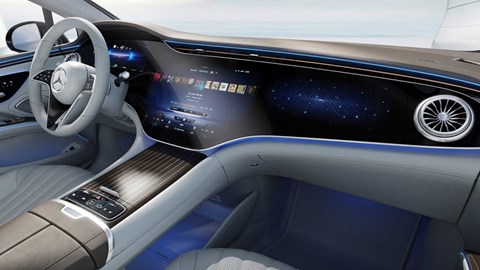
Whether it’s down to customer feedback or improvements in software, we’re starting to see simple, intelligent UI replace the Minority Report-style ones we used to associate with the future.
BMW’s Mixed Reality
The most high-profile example came with BMW’s i Vision Dee concept. BMW’s i Vision Dee previews an entirely new design language for its upcoming Neue Klasse models, but it also reveals an important piece of their interior tech. Building on the traditional head-up display, BMW’s Mixed Reality tech is designed to distract the driver as little as possible – while still proving deep and relevant information.
‘It’s like hands on the wheel, eyes on the road,’ explains Stephan Durach, senior vice president of BMW’s connected company development, and the development of digital experiences. ‘It’s pretty normal to just take a look at what’s happening on the next generation head-up. It’s from pillar to pillar at the best viewing angle.’ So confident is BMW of its mixed reality display, that there are no other screens in the interior – though this is a concept. Expect more touchscreens when the Neue Klasse does hit the road.
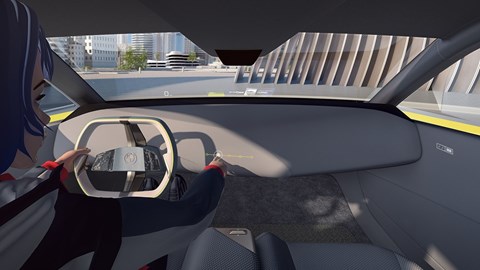
Using Micro LEDS, BMW’s solution goes the length of the dashboard – but key to the idea is the type of information it’s able to display.
‘In your car, you only can see and hear and activities, and you’re limited in the things that you can do,’ says Durach. ‘That’s the big differentiator if you think about what your smartphone can do.’
Smartphones get more of our attention than touchscreens, but they’re far less aware of what we’re doing – and that’s totally different to when we’re driving. OEMs are able to pick up more data about our current activities than Apple or Google could ever dream of – and that’s actually a good thing for making a more intelligent UX.
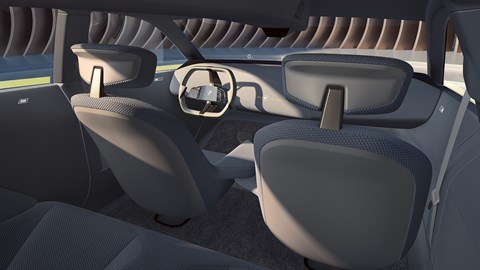
‘[In a car] we know the speed you’re driving, your navigation address, the status of the car, the state of the battery or how much petrol you have, your navigation when getting to a certain point where we can find your parking spot like this, we always think about the context,’ explains Durach.
‘It’s really important for us to give you a better user experience, because we know so much what you’re doing. We know even where you’re looking at the interior cameras.’
Volvo: ‘Less needs more’
Still, data is only half of the equation, as complex software and powerful hardware is required to crunch it. That’s one of the reasons why we’re seeing more and more OEMs partner up with chip manufacturers such as Qualcomm and Nvidia. And despite displays showing less, the power required to make infotainment systems unobtrusive is even greater than before.
More about the Volvo EX90 here
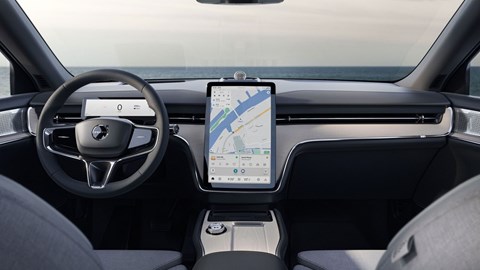
‘Consumer expectations in cars, the invisible parts, the computers in the car are really increasing,’ Volvo’s head of product definition and partnerships, Martin Kristensson, tells CAR. ‘But we’re not going to lots of fancy animations and lots of bells and whistles. We’re going more minimalist, trying to keep this very simple – but doing that is difficult, and requires a lot of resources to make user interfaces as compliant as possible.’
Afeela does context
Brands are making their cars more intelligent on the inside – but what about the outside? Parked opposite demos of the new PlayStation VR 2 headset, the newly-revealed Afeela prototype reveals how UX can begin before you’ve got in a car:
‘The idea is in its stationary or park status that the car should still be able to contribute or share information with you,’ Sony Honda’s product marketing manager Larry Harrison tells CAR. ‘It’s not just a one-way relationship where it’s driver, car. move.’
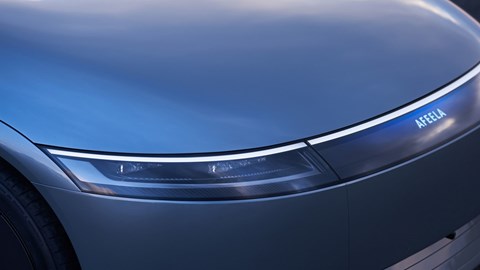
In the same way that smartphones use widgets to inform us at a glance, when it’s released in 2025, the Afeela will keep us updated on whatever we’ve asked it to.
‘When you walk into the car, it can let you know what its charging status is. You can have it show you the sports scores that are currently going on, or weather updates,’ Harrison adds. ‘If it’s an extremely cold morning and you remotely start your vehicle, you’re able to walk outside and quickly identify what the cabin temperature is.’
The end of huge touchscreens?
Mercedes CTO Markus Schäfer will tell you it’s not, and that’s not just because his company’s Hyperscreen tech arguably represents the final form of what OEMs can do with touchscreens. Available in all EQ models as an option from around £8000, it’s everything BMW is moving away from in its i Vision concept.
According to Schäfer, the issue of context is a complex one – and it’s partly based on regions. Mercedes has access to thousands of customers’ use habits – albeit anonymously – and that means it’s able to see the different behaviours of customers across the world. It turns out there trends:
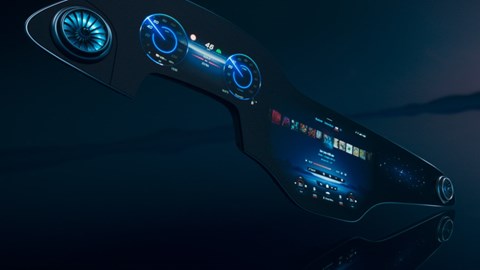
‘To be honest if you look at the Asian market, they love content, and they love an overflow of information,’ Schäfer reveals to CAR. ‘The more screens the better. And they like to operate three devices at the same time.’
‘Europe is definitely more conservative; the US is interesting. You know that California is different to the south and the east, so there’s not one size fits all in the world. We have to adapt more and more when it comes to the digital side of the business. There are differences in preferences in the world.’
The future of UI
If anything, Mercedes’ magnum opus is selling even more than the company thought it would. ‘The requests for Hyperscreen are overwhelming in all markets. We are totally blown away by the take rate of the Hyperscreen,’ Schäfer adds. ‘it’s a very expensive thing, it costs thousands of euros, but people want it. We are increasing capacity like crazy for Hyperscreen, it works for now.’
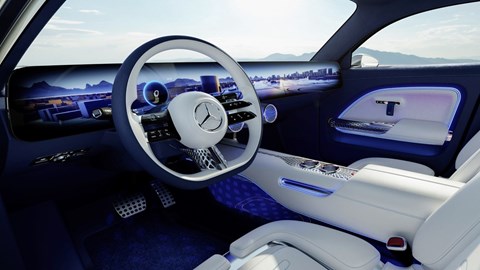
‘But yes, we are reaching a point where a silent mode is very much recommended, because people might think they’re in an overflow.’
Mercedes is open to looking to other solutions in the future, but it’s firmly fixed on supplying current demand. ‘We’re taking it to the next level and there’s something else after Hyperscreen, and we know competitors are taking it to different directions,’ Schäfer concedes.
‘But we also think, what happens in the next ten years? So what comes after screens? Of course we think ahead, but have to look at regions and their preferences, and they are not the same across the world.’